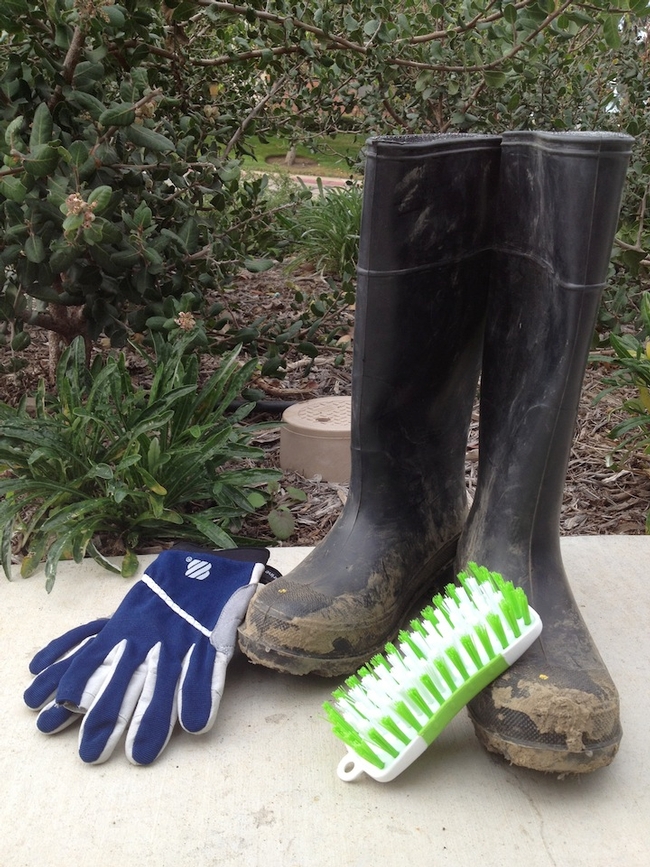How can boaters, anglers, and anyone else who works or plays in wet places help stop aquatic invasive species from conquering new territory? Decon (decontamination) is critical. Invaders can hide in mud on the tread of your boots, cling to the hem of your pants, lurk in damp reels and creels, hang out in bait wells and bilges, yatta yatta! They’re experts at surviving, so you can carry them to the next spot.
What’s the first step in decon? Just take a look! In other words, carefully inspect for mud, weeds, seeds, eggs, animals, shells, slime, etc. that may harbor (or be) invaders.
Next, scrub a dub! Scrubbing and washing boots and gear BEFORE LEAVING the site will cut risks of moving them to a new place. If you have to leave the site without scrubbing gear and boots, seal them into a heavy plastic bag or other secure container. When you arrive home or back to your headquarters, scrub and wash them where the wash-waters cannot run into a storm drain, creek, pond, lake, etc. Wear gloves and eye protection. Use a stiff-bristled brush to remove all visible traces of mud and aquatic life. Pay special attention to crevices. Seal debris that you remove into bags and dispose them in trash containers that will go the landfill.
After scrubbing, allow boots and gear to dry completely, preferably in the sun. Clothing may be put into a clothes dryer for 30 minutes on “high.” Or freeze your boots and gear for 8 hours before using them again. If you want to use the clothes dryer or freeze items, be sure it will not damage them! If you plan to visit another site before you have time to completely dry or freeze your scrubbed gear, consider having two sets and take turns using them. Either way, it’s best to visit just one site in a day.
People who use boats for work should use a boat only at a particular site. If this is not possible, then inspect and decontaminate the boat and allow it to dry completely (including bilges, wells, etc.) before visiting the next site.
Boats need extra care, because they have so many places for aquatic invaders to lurk. CA Dept. of Fish & Wildlife has a handy “Boat Cleaning Guide Book” that shows how to inspect and clean your boat to get rid of aquatic invasive species. CA Dept. of Parks & Recreation’s Division of Boating & Waterways has a great diagram showing where to look for invaders on your boat.
Check out the 100th Meridian Initiative guidelines for drying boats contaminated with quagga or zebra mussels. These guidelines also apply to other invasive species you need to let die before putting your boat or gear back in the water.
The information in this article was presented in workshops conducted by UC Cooperative Extension Advisors Leigh Johnson, Sabrina Drill and Darren Haver and Staff Research Associate Michelle Lande for 180 employees of Public Works, Watersheds, Flood Control, Public Utilities and Parks departments in San Diego, Orange, Los Angeles and Ventura Counties California during Spring 2013. It can be used by anyone who works or plays in lakes, wetlands, watersheds, creeks, streams, etc.
Attached Images:
